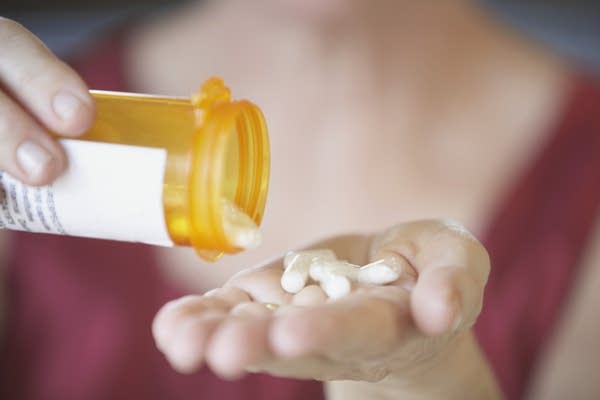Minn. doctors on front lines in prescription drug abuse

DULUTH, Minn. (AP) -- A woman spent two years going to garage sales then asking to use people's restrooms, just to steal their prescription drugs. Two 19-year-old men took turns jumping out of a moving vehicle, just to get a prescription for 30 Vicodin each time.
These are living examples of how severe prescription drugs abuses in Minnesota have become, Carol Falkowski, a long-time state drug abuse safety officer, told members of the Minnesota Medical Association at a forum on Thursday.
"We have a prescription opiate problem in this country and in this state, the likes of which we have never seen," Falkowski said.
"People are going to lie right to your face," said Julie Shelton, a clinical nurse specialist at Essentia Health-St. Mary's Medical Center. "We see it way too much."
Create a More Connected Minnesota
MPR News is your trusted resource for the news you need. With your support, MPR News brings accessible, courageous journalism and authentic conversation to everyone - free of paywalls and barriers. Your gift makes a difference.
Doctors said, however, they often feel caught between patients who need pain medication and those who say they should do more to curb abuse.
The Duluth News Tribune reported Friday that many doctors at the meeting agreed abuse was a problem. But they also say they get blamed whether they prescribe the drugs or not.
"Even if you do everything right, you can be burned," said Dr. Paul Sanford, who practices internal medicine at St. Luke's hospital and is treasurer of the MMA. "It's waltzing in a minefield."
Falkowski said drug abusers would also turn to heroin, which is much cheaper on the street than opioids. She noted a survey found Minneapolis had both cheapest and purest heroin among 20 major U.S. cities. The state must take action quickly as prescription drug abuse now causes more deaths than motor vehicle accidents, she said.
The MMA is considering measures such as requiring doctors to take courses to learn how to manage pain and addiction, as well as increasing their use of the Minnesota Prescription Monitoring Program -- a web-based system that allows them to see if a patient is getting drugs from other prescribers.
But Falkowski said as of March, only 40 percent of pharmacists and 30 percent of doctors in Minnesota were using the system.
